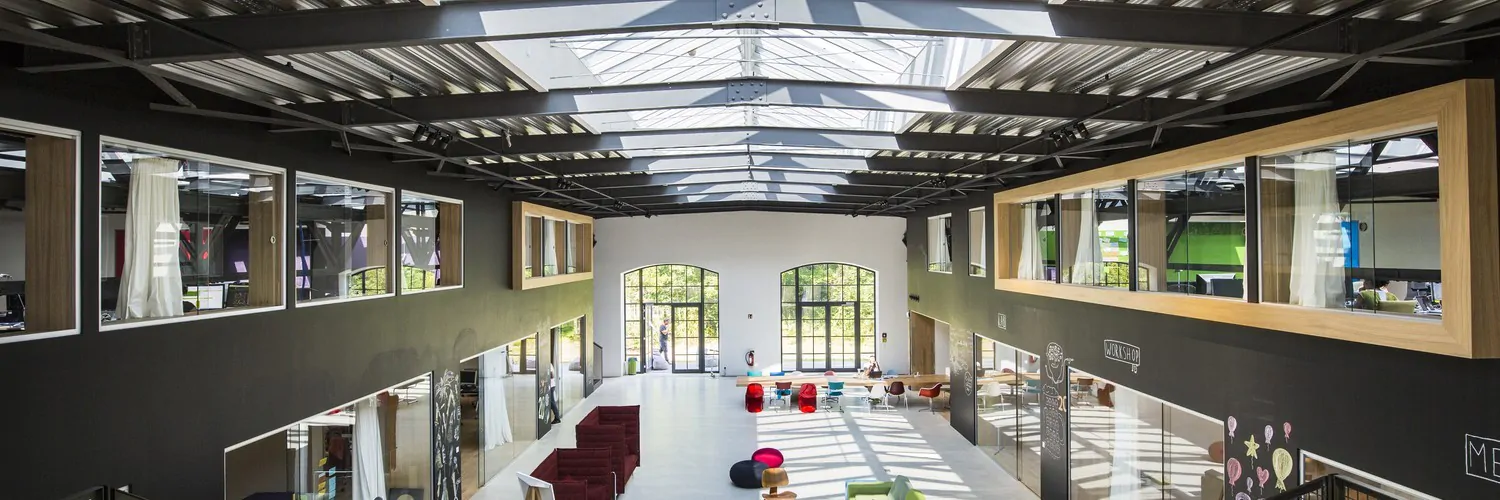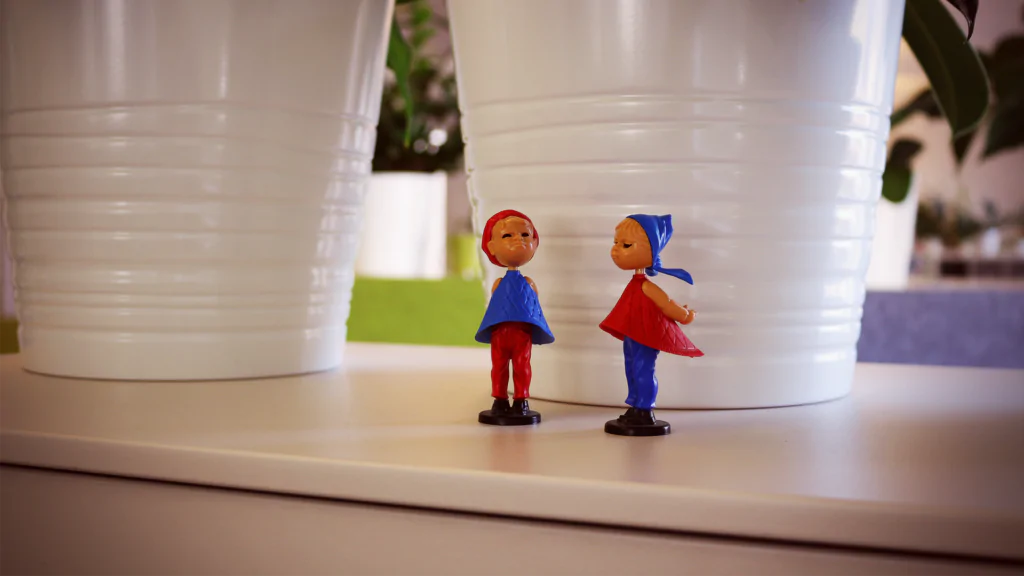A conversation with Ralf Heller, CEO of Virtual Identity, about spatial barriers, hierarchy in the team and the dynamic change in leadership and follow-up.
Without my own office, I am more approachable.
I heard you don’t have your own office in the company, right?
Yes, that’s right.
How does this work? Are you just not working …?
Caught! (laughs) No, you can’t say it that way. I mostly sit at the kitchen table. Or when I am on the phone, it is mostly from our red sofa. It’s on the piazza, our central meeting point in the middle of the building, that’s where I prefer to be. Then there is a workstation on the first floor that I sit at when I have to write something. But it is there for everyone.
Very unusual. How come?
In the old office in Schwabing, I always had a permanent workplace in the open-plan office. At some point I told myself I needed my own office. From then on, despite the door being open, people always stood on the threshold. Then came cautiously: “May I ask you something? I don’t want to disturb you”. There was a barrier there. In this sense, the executive office acts like a status and power symbol that is visible to everyone – I didn’t want that. Today I am trying not to define any more territory so that I can be more easily approached.
And isn’t that going to be too much for you?
I’ve just come from a meeting where I got the feedback that you can see my mood and that it doesn’t always seem inviting. I must have developed a protective wall there (laughs). My job is communication. Being in contact with my colleagues, knowing where they stand and how they are doing, that is a large part of my work. Your own four walls are just a hindrance.

Where are you sitting now and what do you see?
Right now I’m sitting on the red sofa. At the long table, two people are having lunch and are having a lively conversation. Aline is absorbed in her computer. Cristina is further ahead with a new colleague. Cristina laughs a lot and keeps touching her heart. Then I can still see two conference rooms, they are being worked on. In one, everyone is bending over something on the table in a concentrated manner. It looks very lively. In the room next to it, a participant has just leaned back. It seems to be tough.
But you’re the only one who has no space, aren’t you?
No, there are a few other free floaters. If you want a permanent place, you will of course get one too. And that’s the vast majority.
Do the conversations still fall silent when the superior arrives?
I can only talk about myself now. I do believe that my colleagues speak differently when I’m not there. Or that other topics are then discussed. But it’s not that I come and the conversation falls silent. Not at all. And I am happy when I am invited to join the conversation.
Being in contact with colleagues is a big part of my job.
Sounds like the famous flat hierarchy. What role does the topic play for you?
Hierarchy is a disguised term. It is typically associated with the fact that the person who is above us in the organization chart decides about our tasks, our everyday work, also about us. The more arbitrarily this happens, the more it is perceived as an abuse of power and experienced as powerlessness. Teams without a hierarchy are not able to work at all.
And what does that mean for VI?
The challenges that are brought to us can only be answered in interdisciplinary teams. A hierarchy will always develop in this team. One gives impulses and leads, others take them and follow them up. We try to be aware of these structures again and again and discuss the decision-making paths within the team.
How does that work?
It’s not that complicated at all. At the beginning of a project we agree how we want to decide. Do we make decisions as a team by consensus? Does someone decide for us? Hopefully we will then take someone because they are an expert on the subject and not because they are at the top of the organization chart. But that’s still an aid. The ideal situation would be that the change between leading and following occurs completely dynamically, spontaneously.
Do you need particularly self-confident employees who are not driven by fears?
If I enter a decision-making process – even if it is in a team – then I am also responsible. We may ask a little more than others. Everyone knows the feeling of fear and their little siblings worry and insecurity. The question is rather whether we can also name these in the professional environment. In my experience this is not only liberating but also productive. If an uncertainty is mentioned in the daily, the team is given the opportunity to work out offers of help.



